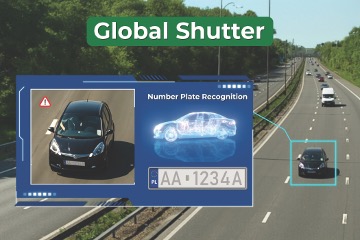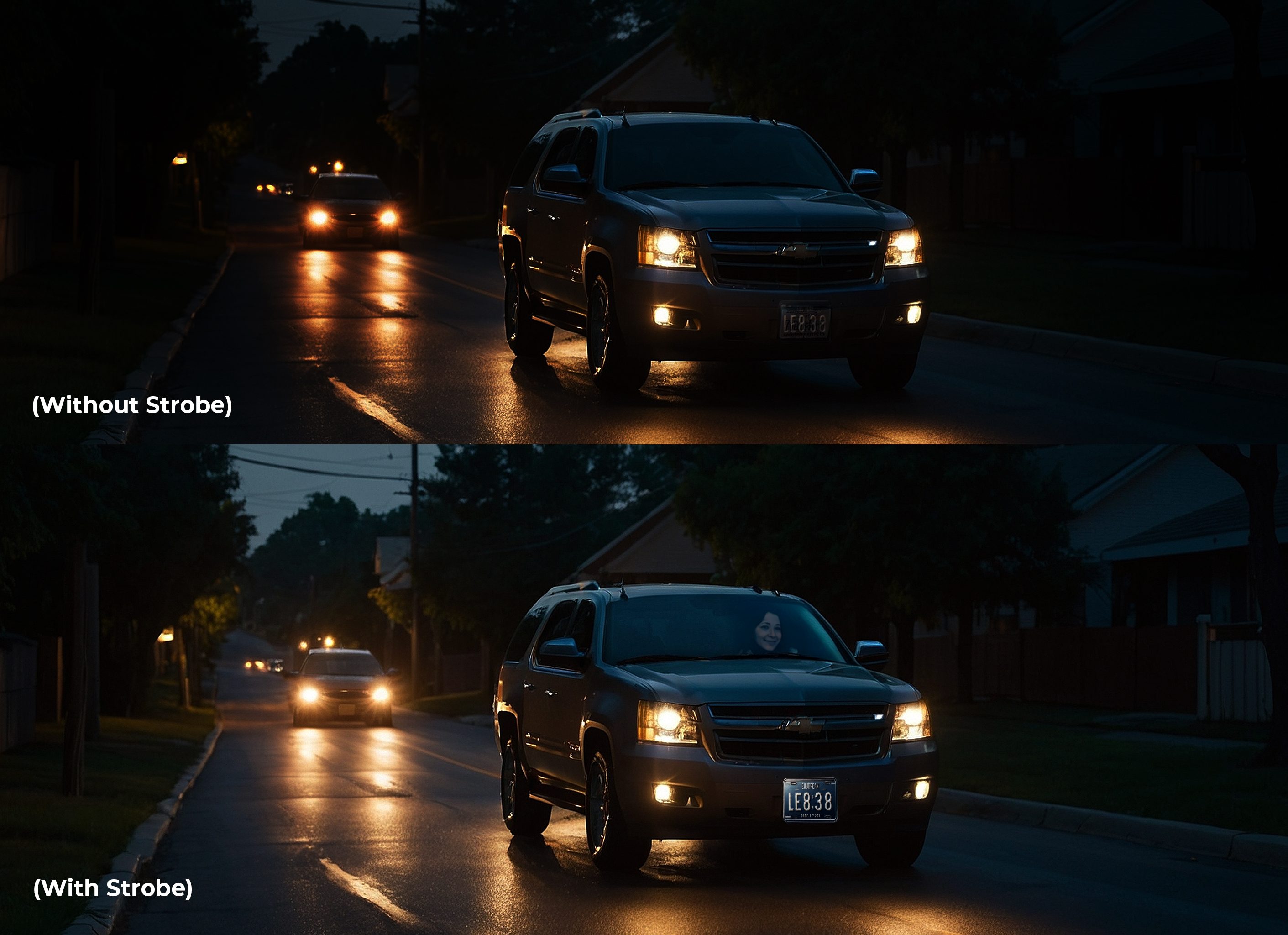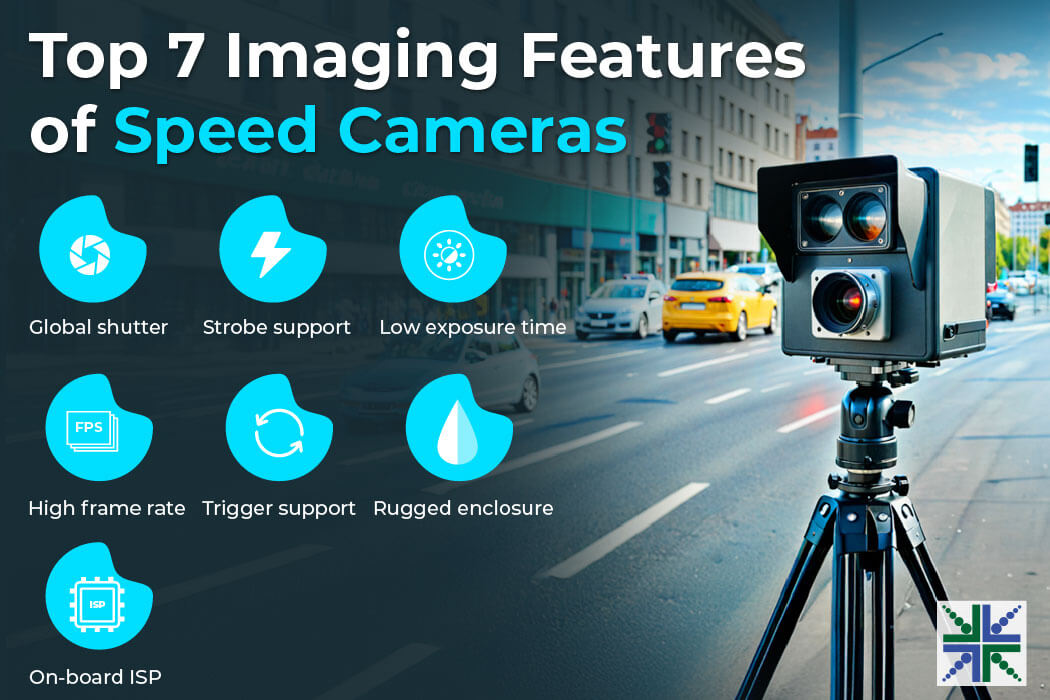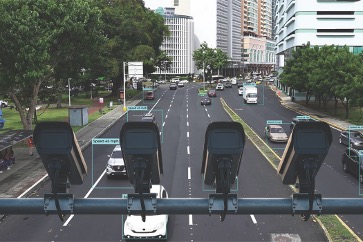Speed enforcement has moved far past manual observation. What once depended on patrol cars and radar guns now has embedded vision systems on its side for delivering verifiable, frame-by-frame documentation. In most urban and highway networks, speed cameras operate silently, tracking each vehicle in real time and collecting time stamped visual proof to back every penalty issued.
However, speed cameras require a specific set of features to help the systems execute mission-critical tasks on congested roads, in dim tunnels, or through heavy rain.
In this blog, you’ll learn about the key features of high-performance speed cameras and why they are so important.
Before we explore the key features, it’s essential to understand how and where speed cameras are typically deployed.
The image below illustrates a real-world setup, showing where speed cameras are positioned for optimal traffic monitoring and enforcement.
Challenges Faced by Speed Cameras Without the Right Features
In many deployments, cameras with legacy specifications fall short. The shortcomings affect image clarity and the analytics that rely on clean data inputs. Some of the common challenges are:
- Rolling shutter distortion: When capturing fast-moving vehicles, rolling shutter sensors produce skewed frames. It leads to warped license plates and untrustworthy evidence.
- Low-light performance drop: In tunnels or during night-time operation, cameras may generate frames with excessive motion blur or underexposure. It makes number plate recognition difficult.
- Inadequate frame rates: Cameras capturing fewer frames per second miss motion transitions. This results in missed violations or erratic vehicle tracking, especially in multi-lane highways or staggered intersections.
- No on-board image signal processing (ISP): Without ISP support, raw data must be processed off-site, requiring high-bandwidth streaming and introducing latency. It also limits the system’s ability to apply real-time enhancements like noise reduction or white balance correction.
Top Imaging Features of High-Performance Speed Cameras
Global shutter mode
Traditional rolling shutter systems struggle to capture fast-moving vehicles without distortion, often leading to skewed or smeared images. Global shutter technology addresses this limitation by capturing all pixels in a frame at the exact same moment. It ensures complete freeze-frame clarity—even at vehicle speeds up to 185 mph, day or night.
Global shutter-equipped speed cameras maintain the integrity of critical imaging data like alphanumeric sequences, even during heavy traffic flow periods.
The below image (captured from a live test video) illustrates how global shutter technology delivers distortion-free imaging of fast-moving vehicles in real-world traffic conditions.
 For a detailed comparison of global shutter vs. rolling shutter technology, see our comprehensive blog: What are Global Shutter and Rolling Shutter Cameras? How to choose the one that fits the application?
For a detailed comparison of global shutter vs. rolling shutter technology, see our comprehensive blog: What are Global Shutter and Rolling Shutter Cameras? How to choose the one that fits the application?
Strobe support for lighting control
Speed enforcement takes place under varying ambient conditions, including low-light environments, tunnels, or during night-time. Many speed cameras are equipped with strobe synchronization that emits short, high-intensity light bursts at the moment of capture to maintain image clarity. The strobes freeze fast-moving vehicles in place, eliminate motion blur, and highlight reflective surfaces like license plates.
When combined with global shutter capture, strobe support ensures imaging consistency across all time-of-day operations. For example, it enhances detection accuracy in dimly lit or inconsistent lighting scenarios.
 Explore how strobe lighting improves clarity in challenging environments in our blog: What is strobe function in a camera?
Explore how strobe lighting improves clarity in challenging environments in our blog: What is strobe function in a camera?
Fast shutter time
Accurate imaging of vehicles traveling at high velocity depends on extremely short exposure windows. Speed cameras with low exposure time or fast shutter speed freeze motion in less than a millisecond, reducing blur and preventing data loss caused by rapid movement.
This becomes critical when dealing with license plate recognition or lane-specific enforcement, where even minor smears can hinder automated identification. Cameras with dynamic exposure control also adjust in real time to sudden lighting changes, such as glare from headlights.
Trigger support for sensor synchronization
Many speed camera systems include hardware trigger inputs for synchronization with external sensors, such as radar guns, LIDAR modules, or inductive road loops. It helps them deliver time-accurate evidence. The triggers initiate image capture at the precise moment a vehicle crosses a measurement threshold.
Such alignment enhances the credibility and traceability of captured data, as it connects speed readings directly with visual proof. Trigger support also enables multi-sensor fusion, making it easier for enforcement systems to handle events like overlapping traffic, split-second violations, or lane-based infractions.
High frame rate
Monitoring fast-moving traffic demands cameras that can capture multiple frames per second without sacrificing image quality. High frame rate imaging can reach 60 frames per second or higher at full resolution. It empowers speed enforcement systems to track vehicles accurately across short detection windows.
More frames within a given time period provide redundant motion information so that velocity calculations can be carried out with greater fidelity. This reduces errors caused by occlusions, vehicle overlap, or erratic driver behavior. High frame rate support is very important in complex urban intersections and multi-lane highways where accurate violation capture depends on split-second measurements.
Rugged and weather-proof enclosures
Outdoor deployment of speed cameras exposes them to dust, rain, humidity, high winds, and wide temperature fluctuations. Embedded vision systems withstand these stresses by leveraging IP67-rated or higher enclosures that resist water ingress, particulate accumulation, and physical impacts.
Such ruggedization makes sure that imaging performance and internal calibration parameters remain stable over years of continuous field operation without frequent maintenance.
On-board Image Signal Processing (ISP)
Effective speed cameras come with integrated ISPs that manage complex image processing tasks. These include exposure control, dynamic white balancing, noise reduction, gamma correction, and color space conversion. That way, embedded vision systems can deliver high-quality imaging output without having to stream high-bandwidth data to external processing centers.
So, on-board ISPs enhance real-time decision-making for speed violation detection while also reducing total network traffic.
High-resolution sensors
Speed cameras are equipped with high-resolution sensors capable of capturing minute details even when vehicles move at high velocities. These sensors deliver frame sizes reaching up to 4K and higher, ensuring that every vehicle’s identifying marks, such as license plates and other features, are clearly recorded.
High pixel density across wide fields of view allows for accurate violation documentation even in multi-lane traffic conditions.
e-con Systems Provides World-Class Speed Cameras
e-con Systems has been designing, developing, and manufacturing OEM cameras since 2003. Over the years, we have helped many clients integrate best-fit speed camera modules into their systems. These include:
- 5MP Sony Pregius S IMX568 Global Shutter Camera
- 2 MP Sony® Pregius S™ IMX900 Global Shutter Camera Module
- Sony® Pregius IMX264 Monochrome/Color USB 3.0 Camera
- Full HD AR0234 Global Shutter Camera
Explore our traffic monitoring camera expertise
Use our Camera Selector to navigate our complete portfolio.
Need an expert to find and integrate the perfect speed camera? Please write to camerasolutions@e-consystems.com.

Dilip Kumar is a computer vision solutions architect having more than 8 years of experience in camera solutions development & edge computing. He has spearheaded research & development of computer vision & AI products for the currently nascent edge AI industry. He has been at the forefront of building multiple vision based products using embedded SoCs for industrial use cases such as Autonomous Mobile Robots, AI based video analytics systems, Drone based inspection & surveillance systems.





